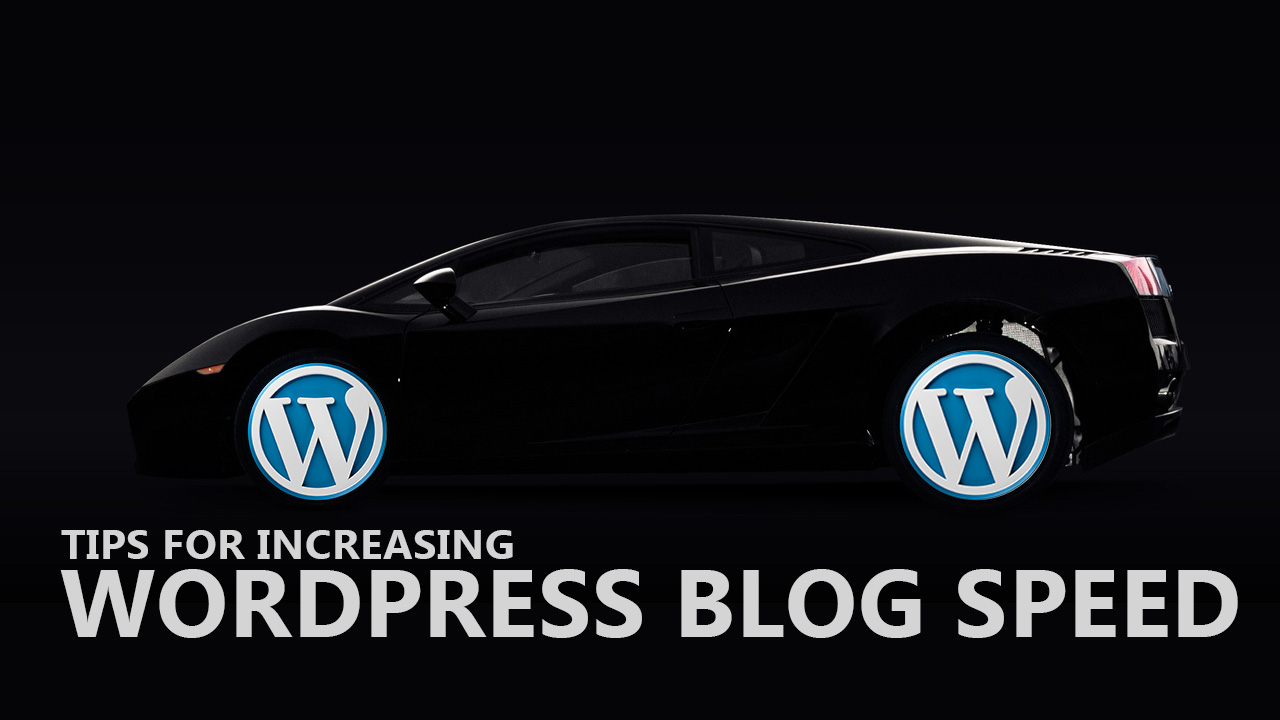Tips For Increasing WordPress Blog Speed
October 23, 2019 | Tutorial, All, Digital Marketing, SEO, Web Tools, WordPress | No Comments

Do you want to Increase your WordPress Blog Speed?
WordPress is the most popular platform used by individuals/firms who want to create an effective and quick blog for their website. Although, simply setting up a WordPress site and letting it run isn’t enough to make sure that you’re giving your client the best possible online experience.
Even something as small as a one second delay in loading your website, could make you lose your customers and views. In fact, this 1 second of delay could result in a 7% decrease in conversions, a 16% decrease in client satisfaction, and 11% fewer views on your blog pages(Just an example).
So the main question is, how can you increase the speed of your WordPress blog effectively and quickly to boost conversion rates? We are sharing some of the site speed optimization tips to increase WordPress speed.
- Keep Yourself Up-to-Date
- Reduce Your HTTP Requests
- Allow for Compression Wherever You Can
- Keep your Images Optimized
- Start Caching
- Try a CDN
1. Finding the Right Host
Ultimately, you can have the best, most impressive looking WordPress website in the world, but if it’s never going to be fast, then you should pick a better WordPress host. Using the proper hosting plan can have a big impact on your loading speed. This is why a lot of companies consider using a VPS or dedicated hosting when their traffic continues to increase.
Make sure that you choose a web hosting plan that’s perfectly suited for your business. For instance, if you run a website that features secured data transmission – such as an eCommerce site, then you’re going to need dedicated hosting to keep everything running smoothly. It might be more expensive, to begin with, but it’s crucial for the sake of giving your customers the experience they deserve.
To speed up a WordPress web site, you want to have an online host that’s reliable with most.
2. Keep Yourself Up-to-Date
WordPress frequently updates its plugins and technology to make sure that users are getting the best possible experience out of the platform. Sadly, it’s easy to simply ignore these updates – particularly if you don’t spend a lot of time checking your email or upgrading your WordPress blog.
Making sure that your WordPress site is always up to date with the latest version can not only help it to load faster, but it could also mean that you’re less vulnerable to cyber-attacks and security problems too. After all, the two main things that update address are often website speed optimization issues, and holes in defense strategies.
3. Reduce Your HTTP Requests
Approximately 80% of your page-loading times will be spent downloading the various elements within your web pages, such as scripts, images, and stylesheets. An HTTP request will be made for each of these elements, so it makes sense that the fewer requests your website has to make, the faster your pages will load. So, how can you minimize your HTTP requests?
Place your scripts at the bottom of your pages.
Make sure you use CSS instead of images
Streamline your elements on each page
Think about combining multiple style-sheets into one
This is one of the simplest speed optimization tips to extend WordPress speed.
4. Allow for Compression Wherever You Can
One thing you’ll quickly learn when you’re running a WordPress blog is that high-quality content is key to success. Unfortunately, this content can be heavy, which often means that it weighs your website pages down and makes them slower to load. Since you can’t compromise on the standard that your web site offers, the next smartest thing is to simply compress that content to permit quicker loading.
Using a simple compression software can help to reduce the HTTP response and bandwidth of your WordPress pages so that they start to load instantly quicker. Compressed images can speed up the WordPress web site and improve conversions.
5. Keep your Images Optimized
Images are an important way of ensuring that your website is as engaging as possible. However, there are things to consider if you want to help them load as quickly as possible. Use image editing tools to reduce the dimension of your images, avoid any unnecessary empty SRC codes, and improve the performance of your visuals. Not only that, it will dramatically speed up your WordPress website.
6. Start Caching
Using a cache plugin helps speed-up the performance of your website WordPress blog in no time.
Caching on a website simply means that the information, data, and images on your site are stored in a specific location, so that your visitors won’t have to request data from your server each time they access your website.
Caching reduces loading time sufficient because it means that visitors don’t have to load everything from scratch every time, allowing information to appear faster on a screen.
Check out Best Free WordPress Cache plugins
7. Try a CDN
Finally, a CDN or a content delivery network will distribute your web site files across a range of different servers. Since your static files are duplicated in locations around the globe, this makes it easier for you to transfer data to customers regardless of where they are.
Several WordPress speed optimization experts highly recommend installing a CDN.
Wrapping Up
I hope that I even have provided enough data to assist developing bloggers to extend their WordPress blog speed. additionally to a fast-loading Blog site. Google can happily crawl your site and boost drive traffic to your site. If there are different tips that I haven’t mentioned during this article, please let us in comments below.